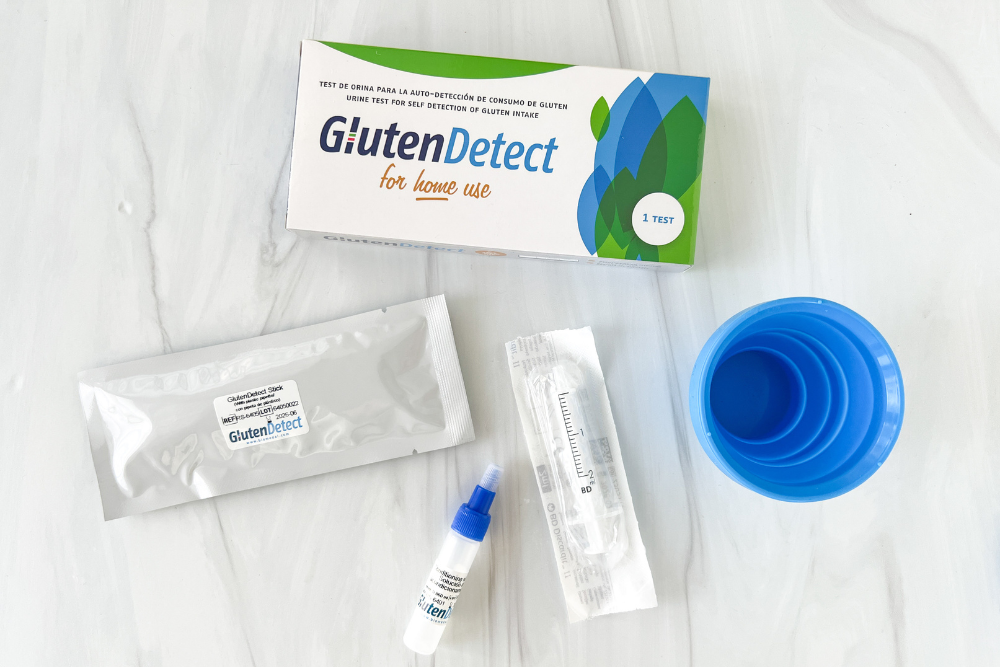
Have you ever gotten sick and wondered, “Was I just glutened?” or “Is it something else I ate?” Thanks to a test known as Gluten Detect (formerly known as the Gluten Detective), you can test your urine or stool for the presence of gluten. In this article, I review the Gluten Detect test and help you determine if it’s right for you. This post contains affiliate links. Please see my disclosures.
Do you have a gluten disorder, such as celiac disease, non-celiac gluten sensitivity, or gluten intolerance? Have you ever wondered if, despite following a strict gluten-free diet, you might inadvertently still be eating gluten, a protein found in wheat, rye, and barley?
I know a lot of people who follow a strict gluten-free diet but still suffer from a variety of maladies; they’re often quick to blame gluten even though they have little evidence of what caused their symptoms.
Are sneaky bits of gluten seeping into their diet? How can they know for sure?
What if I told you that an exciting at-home test would enable you to check your urine or stool for traces of ingested gluten?
The Gluten Detect test, an at-home gluten exposure-detecting kit, will help you determine once and for all if your strict gluten-free diet is truly gluten-free.
In this post, I’ll share more about how the Gluten Detect test works and how it can help you know if traces of gluten are sneaking into your gluten-free diet. I’ll also share my personal test results at the end.

What is Gluten Detect?
Gluten Detect is an at-home urine or stool test that enables you to test for the presence of gluten in your digestive tract. In other words, the test helps you self-monitor gluten-free dietary compliance and gluten intake.
Did the food you ate last night contain hidden gluten? Your tummy says yes, but how can you know for sure? A quick Gluten Detect urine test the following day will uncover the truth.
The test works by looking for Gluten Immunogenic Peptides (GIP), which are fragments of gluten resistant to digestion and eliminated in urine and stool.
GIP in urine and stool indicates that a person has recently eaten food(s) containing gluten, and ingesting even a tiny amount of gluten can damage the mucosal lining of the gut (small intestine) in people with celiac disease.
Such damage means the intestinal villi, which look like fingers, become flattened and damaged, thereby losing their ability to absorb nutrients. This can lead to lingering unresolved symptoms and the likelihood of the person coming down with even more serious diseases in the future.
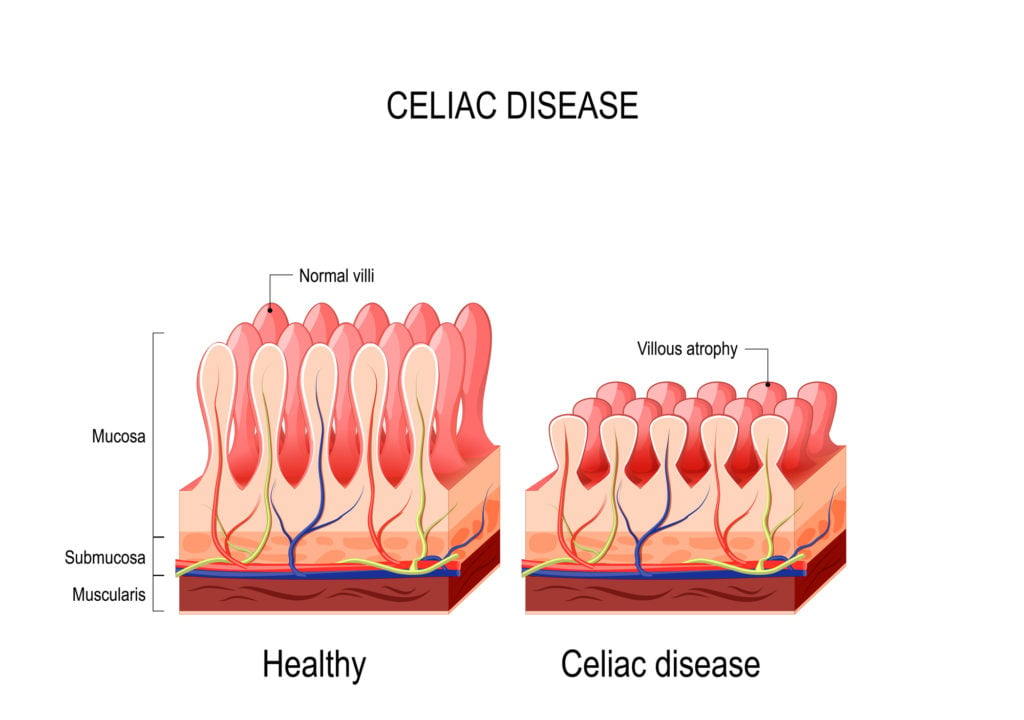
When to Use the Gluten Detect Test
You might use the Gluten Detect test for various reasons, many of which I’ll discuss below.
(1) Determine If You’ve Been Inadvertently Eating Gluten
Do you think your gluten-free diet is 100% compliant? Are you getting inadvertent gluten exposure through a shared kitchen or appliance or airborne gluten? Maybe there’s hidden gluten in your daily medication or lip balm? Maybe you have silent celiac disease or asymptomatic celiac disease?
You can test, not guess, your dietary compliance by taking a Gluten Detect test.
Also, if you’re new to a gluten-free diet, the test can help you verify dietary compliance as you navigate the complexities of going gluten-free.
I recommend you first take a urine test to get a benchmark, then retake the test to “check-up” on your progress and compliance.
Fun Fact! Almost every clinical trial related to celiac disease utilizes Gluten Detect to monitor patients’ dietary compliance.
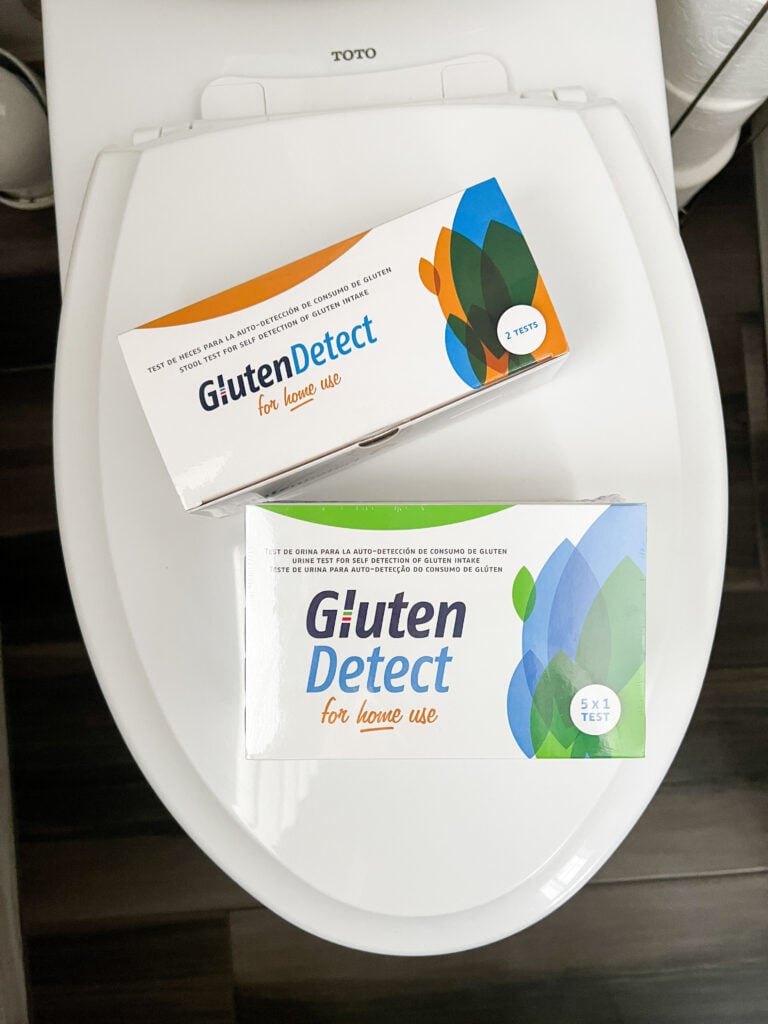
(2) Determine If You Got Glutened Last Night
If you enjoy eating at restaurants or friends’ houses, you might accidentally eat gluten without realizing it. Eating out is the number one challenge faced by the gluten-free community and with good reason.
The sad fact is that one in three restaurant dishes offered as “gluten-free” actually contain gluten! And no shared kitchen is free from the potential for gluten cross-contamination either.
If you feel sick (like you got glutened) within hours after eating out, you might wonder if your indigestion, bloating, or urgent diarrhea is due to gluten exposure, food poisoning, another food intolerance, or something else altogether.
By taking a Gluten Detect test, you’ll be able to know if there’s gluten in your system and place blame where blame is due.
A word to the wise: Be careful before you blame a restaurant or single source for your gluten woes. Maybe gluten was hidden in a snack you ate later that night or in the drink you “thought” was gluten-free. Maybe you ate at a restaurant but had ice cream at another restaurant later that evening. How could you possibly know the exact place you got glutened?
If you’re worried about inadvertently eating gluten, I recommend using a Nima Sensor (pictured below) or Allergy Amulet to test your food before you eat it. To use either device, you simply add a small piece of food to the test capsules, insert the capsule in the device, and in about 1-2 minutes, the device will reveal if the food contains gluten.
Although controversial and expensive, such devices are a great way to protect yourself from accidental gluten exposure before it even happens.
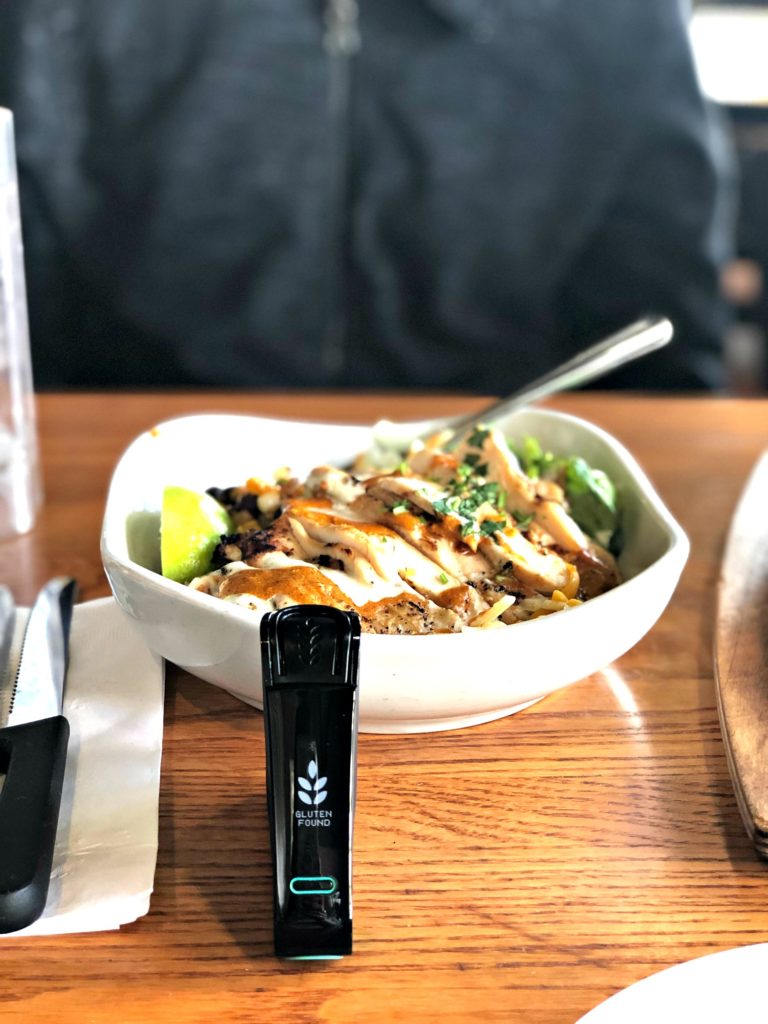
(3) Get Insights Into Someone’s Diet
If you’re a caregiver for someone with celiac disease or another gluten disorder, you might be wondering if they’re 100% gluten-free when you’re not watching them.
For example, a nursing home caring for your elderly parent might be feeding your dad meals with gluten even though you requested he only receive gluten-free meals.
A doctor may find that a celiac patient is not healing and is still symptomatic. The physician doesn’t know if the patient is fully compliant or if she has refractory celiac disease (unresponsive celiac), which is more serious and requires more medical attention.
A child with celiac disease or gluten sensitivity might eat gluten at school when her parents aren’t watching or advocating for her.
My friend put her child on a gluten-free diet after learning he had a severe gluten intolerance, which caused a slew of health and behavior issues that overwhelmed the family.
I spotted the boy at an after-school activity, chowing down on peanut butter crackers he purchased from the vending machine. His mom wasn’t there to tell him “no,” and when left to his own devices, he ate gluten.
Why is this important? When the parents see that the child’s health and behavior don’t improve on a gluten-free diet, they’ll say the gluten-free diet didn’t work. But what they won’t realize is that their son was never fully compliant to begin with.
A gluten-free diet doesn’t work unless you’re 100% compliant. Low gluten diets, or people who cheat on their gluten-free diets, rarely achieve the results they desire.
If a parent suspects their child is eating gluten – maybe on the sly at school or camp – they can test their child for gluten exposure using the Gluten Detect test and know for sure.
Visual proof can help a child understand that sneaking gluten is not okay, and the parent can now help redirect the child toward making better decisions.
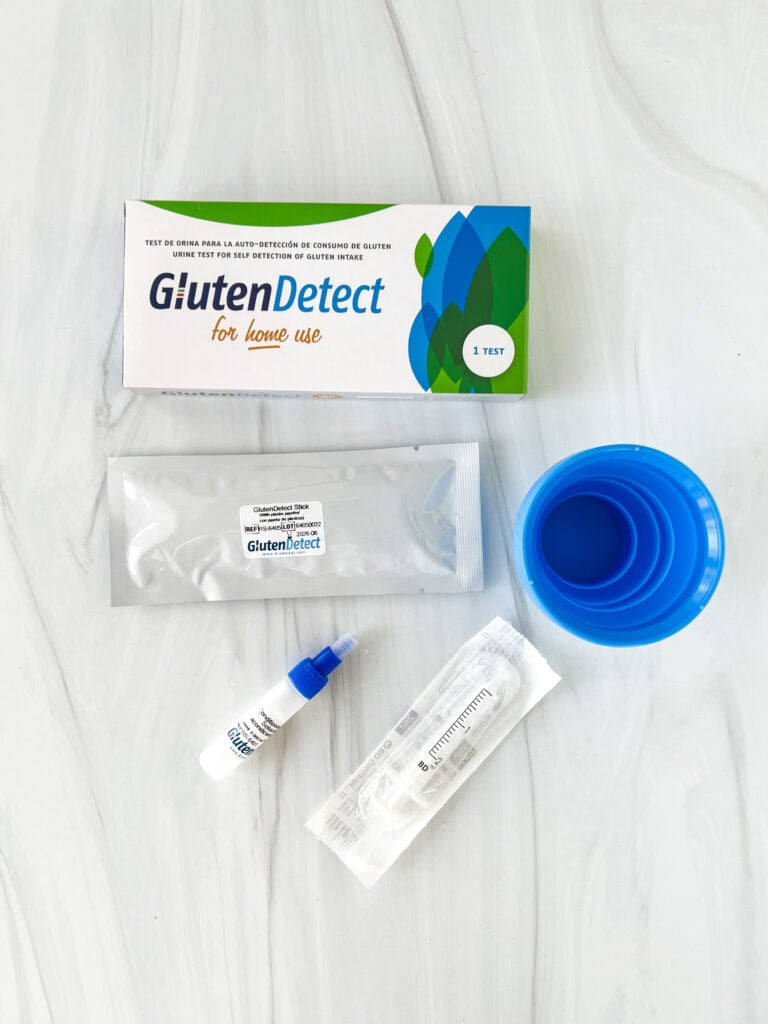
Why Is Dietary Compliance Important?
A gluten-free diet is the only treatment option for people with celiac disease, gluten intolerance, and non-celiac gluten sensitivity. The “treatment” is complex and requires a person to learn a new set of rules regarding what they can and can’t eat. It also requires significant behavior changes and comes with a hefty emotional burden.
Experts say that a person with celiac disease can safely consume 10 mg of gluten per day without triggering their symptoms. While zero gluten is ideal, it’s not always possible.
Sadly, a study published in The American Journal of Clinical Nutrition found that the average amount of gluten consumed by people following a gluten-free diet is 224-363 mg daily, a far greater amount of gluten than what is considered “safe.”
Researchers of a published study in Gut found detectable levels of gluten peptides in 89% of celiac patients on a gluten-free diet.
Seeing that people on a gluten-free diet are still eating gluten, it’s no wonder that researchers found a “substantial” number of celiac disease patients still show intestinal damage years after implementing a gluten-free diet.
Interpreting the Test Results
When Gluten Detect is positive, it means you’re eating gluten, either on purpose or inadvertently. It also implies gluten is likely behind whatever ailment you’re dealing with at the moment.
If you get a positive result, I recommend repeating the test every week until you get a negative result so you can know that the changes you’re making are working.
If Gluten Detect is negative, there’s no gluten in your system. If you’re dealing with an ailment at the moment, or you don’t feel your best self, it’s unwise to blame gluten.
Instead, your symptoms could be a sign of another food sensitivity, candida, poor gut health, or something more serious. I recommend consulting your doctor, celiac nutritionist, or dietician for help.
Using Gluten Detect
The Gluten Detect test comes in both a urine and stool test, and each test can detect as much as 50 mg of gluten, equivalent to one breadcrumb.
The urine test is much easier to use, while the stool test has a few additional (and more squeamish) components. Both tests work similarly to a pregnancy or Covid at-home test.

The urine test is 96% accurate when taken in a 3-15 hour window of possible gluten exposure, although the optimal window for testing is 6-9 hours.
The stool test can detect gluten for 1-6 days, although the optimal time for detection from ingestion is 1-2 days.
My Gluten Detect Results
I’m meticulous about my gluten-free diet. If I question a food for any reason, I don’t eat it because it’s not worth getting sick. I also test much of my food with my Nima and over-communicate with restaurant servers and chefs about my need for a gluten-free meal.
Yet, sometimes, I come home and feel sick after eating at a restaurant or a friend’s house.
Sure enough, within days of the Gluten Detect sending me a complimentary urine and stool test, I ate at a restaurant and had that not-so-good feeling afterward.
Beyond this one experience, I have long been curious if I was fully compliant with my gluten-free diet. I have celiac disease and understand that I cannot and should not eat gluten.
After learning that recent clinical studies show that more than 70% of celiac (coeliac) patients without symptoms still present with intestinal damage, I couldn’t help but wonder if I was one of those people.
The morning after my suspect meal, I decided to take the urine test. The test was negative, meaning there was no detectable gluten in my system.
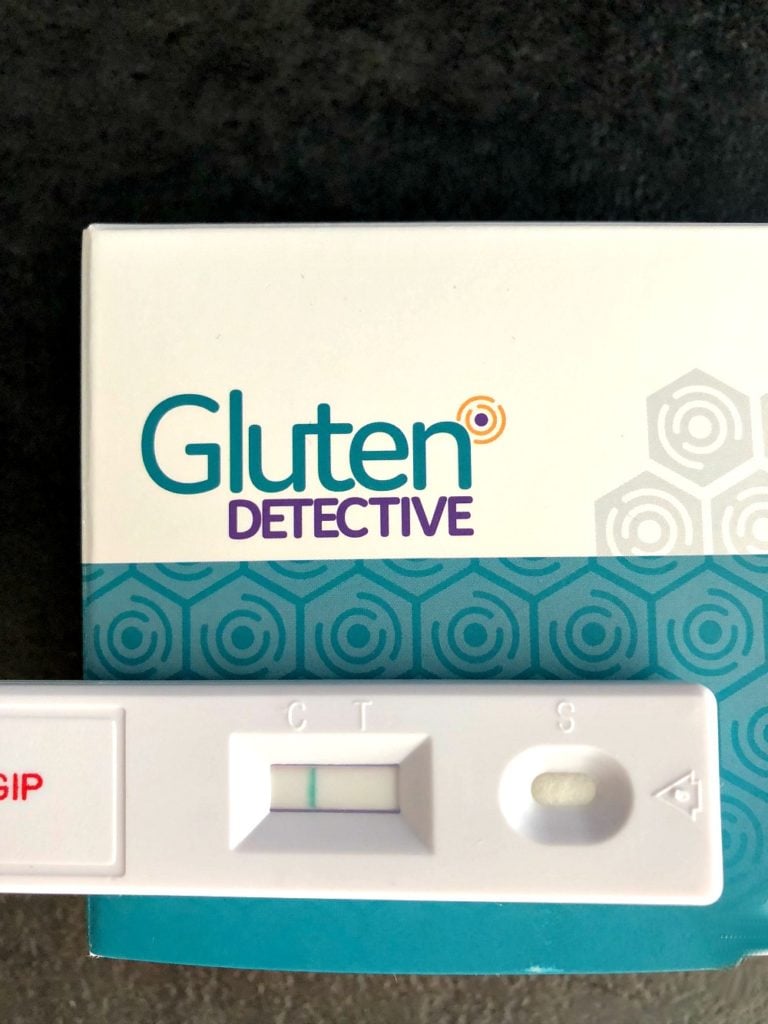
I waited two days and did the stool test, thinking surely I had gluten in my system (maybe a crumb vs. two bites of bread), and the stool test, too, came back negative.
With this information in hand, I learned that I was a diligent gluten-free eater, and I shouldn’t blame gluten every time I feel sick to my stomach. Lesson learned.
A Few Caveats about Gluten Detect
While I love the application of the test, I must admit that the urine and stool tests take a little getting used to. I read the instructions repeatedly to ensure I didn’t miss a step, but I still struggled to collect a stool sample and mix it correctly with the liquids in the kit.
Make sure you dedicate plenty of “toilet time” to do the tests properly and slowly so you don’t miss any steps.
I hope the testing technology will improve over time and become easier and quicker. In the meantime, doing the tests in the comfort of my own home is a major plus.
Where to Buy Gluten Detect
Gluten Detect urine and stool tests are available online only. When you check out using my special affiliate link and code GOODFORYOU25, you’ll enjoy 25% off your purchase (new customers only). A five-pack urine test costs $75, and a two-pack stool test costs $40.
If you try Gluten Detect, please return to leave a comment and let me – and others in the gluten-free community – know what you think.
Please note that Biomedal developed the tests; Glutenostics brought the tests to the U.S. and Canada. You might see either company name on packaging and marketing materials.
Related Articles
New to the gluten-free lifestyle? Learn everything you need to know about going gluten-free and fast-tracking the healing process in my SIGNATURE Gluten-Free Course.
Love eating out? Download The Ultimate Guide to Eating Out Gluten Free.
You might enjoy these articles, too:
- How to Quickly Recover After Accidentally Eating Gluten
- What You Should Do When You Accidentally Eat Gluten
- Is Gluten Behind Your Bloating and 6 Other Reasons You Feel Bloated
- What You Need to Know About Nima Sensor Before You Buy – Perspective from a Celiac & Nutrition Professional
- Crap, I Was Glutened! How Long Does Gluten Stay In My Body?
- The Pros and Cons of a Gluten-Free Diet – Risks & Benefits
- Can You Be Too Gluten-Free? How to Balance Dietary Vigilance Without Losing Your Mind
- Is the FDA’s 20 ppm Gluten Threshold Enough?
- Should You Get a Gluten-Detection Dog?

I’ve only used it a few times so I might recommend you contact the company for a more accurate answer. Good luck!
I got some of these and did a urine test after not feeling well eating at a restaurant. The test line was extremely faint, but visible. In your experience, is there always a faint shadow/hint of a line in the test area, even with a negative?
These are all great questions. Of course user error can be an issue with anything. I might suggest you reach out to the Gluten Detective directly as I’m not qualified to answer such questions. I have a feeling they can help you best. Good luck!!
Hi,
Can you execute the test wrong? With the results being wrong? Not enough stool? To much stool? Not enough time? Not enough drops? To many drops? Thank you!
Thank you for this question Anna. Unfortunately I don’t know if the tests have an expiration date, per so, so please do inquire directly with the company.
I too have celiac disease and own a Nina Sensor so I am very interested in the Gluten Detective. Can I assume there is an expiration date on these tests (like the NIma Sensor). If so, what is he usual shelf life of the urnine v. stool tests?
Thanks for all of your research and testing!